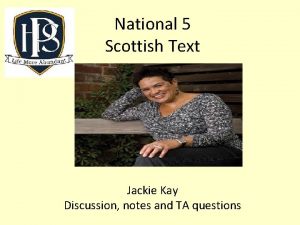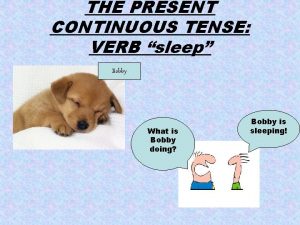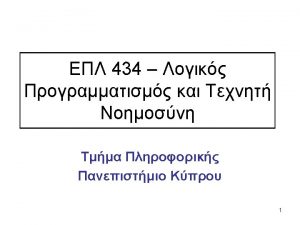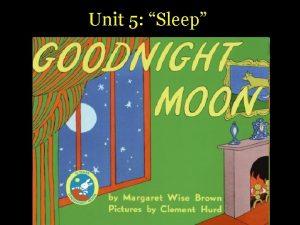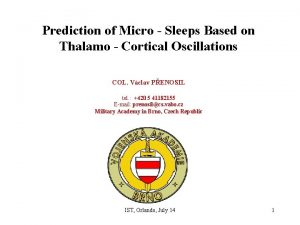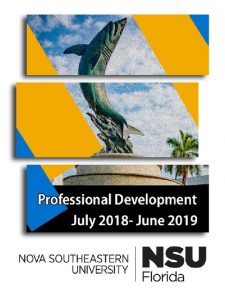Where is it In the Father sleeps in











- Slides: 11



- Where is it? - In the….

*Father sleeps in a garage/ bedroom/bathroom. *Mother cooks in a kitchen/living room/garage. *Sister watches TV in the garden/bathroom/garage. *Granny washes in the garden/ living room/bathroom.

I have a house. I have a living room. I have a …….

Grade: 2 Unit 4: “The World Around Us” Lesson title: “Different Places” by Natalya Kintsel, English teacher school-gymnasium # 6 after Abai Kunanbaev, the town of Stepnogorsk

Learning objectives 2. L 6 understand some specific information in short, slow, carefully articulated talk on routine and familiar topics 2. S 2 ask questions in order to satisfy basic needs and find information on familiar topics and classroom routines 2. S 3 use a limited range of basic words, phrases and short sentences to describe objects, activities and classroom routines 2. R 6 understand with considerable and particularly visual support, some specific information in short, simple texts on familiar topics 2. W 3 write short phrases to identify people, places and objects Lesson objectives By the end of the lesson, students will be able to: • Recognize words and directions pronounced by a teacher or in a video and follow them • use the vocabulary of places, names of rooms, furniture, family, etc. to describe the house and ask questions and answer the teacher and classmates’ questions • identify the definition of names of the rooms and places in short texts • record his or her understanding/knowledge by writing (not less than) four facts about the house

Methods of active learning ØEliciting (Teacher uses eliciting to revise topical vocabulary at the beginning of the lesson) ØPair work (Making up a dialogue using paper puppets and the structure “Where is …. ? She’s/He’s in the……” and reading the text in pairs ) Methods of active learning Ø 3 by 3 drilling strategy (At the stage of revising topic vocabulary and making word combinations “adjective + object”) ØSinging the song with movements together (Energizer ) ØTPS method (While doing post-watching and post-reading activities) ØSelf-assessment “The tree of mood”, Voting (At the end of the lesson teacher uses voting and “The tree of mood” to get feedback)

Differentiation approaches ØDifferentiation by task ØDifferentiation by pace ØDifferentiation by outcome ØDifferentiation by support ØDifferentiation by home task

Criteria-based assessment Throughout the lesson such types of formative assessment were applied: ØPeer assessment ØSelf- assessment ØTeacher-based assessment ØCriteria-based assessment ØFeedback (Voting, “Traffic light”)

Influence of my coach and colleagues’ knowledge within microteaching and group presentations ØMicroteaching has influenced the approaches to my planning the lesson. I used some methods and strategies which were presented by my trainer during the course and some of them were applied by my colleagues in their plans. Using such methods as eliciting, using paper puppets and TPS-strategy is aimed at active learning development ØFeedback received from my trainer and colleagues influenced my lesson planning positively, as it Øcontributed My colleagues’ and the trainer’s feedback had a positive impact on my lesson planning, as it contributed to to my practical teaching experience. For example: my trainer advised my to use 3 by 3 drilling strategy to revise topical vocabulary and get the acquisition of knowledge and some teaching experience. students to make up word combinations. My colleagues also advised me TPS method while students’ doing For example: I was advised to use 3 by 3 drilling strategy to introduce topic vocabulary, TPR method. exercises. Ø A lot of methods and strategies were presented during the course. ØI still have some difficulties. So in future I’m going to improve my planning practice and teaching. I’m going to According to my students’ needs I consider the most effective for active learning such strategies as eliciting, focus on TPR method because I have understood that it is very effective with primary learners. It develops their TPS method, 3 by 3 drilling strategy and various types of questioning. listening skills. This method is flexible and I can adapt it to different situations and content. I find them very effective in teaching primary students and developing their communicative skills. Also I’m going to use Inductive approach because this approach involves all students in learning process and These methods can be used in different situations and content because they help teacher to involve students tend to participate more actively. It is focused on students’ capacities and abilities. and have them motivated within the lesson.
 Text jackie
Text jackie Sleep present continuous
Sleep present continuous I have seen them riding seaward on the waves analysis
I have seen them riding seaward on the waves analysis Thể thơ truyền thống
Thể thơ truyền thống Hươu thường đẻ mỗi lứa mấy con
Hươu thường đẻ mỗi lứa mấy con Thế nào là hệ số cao nhất
Thế nào là hệ số cao nhất Diễn thế sinh thái là
Diễn thế sinh thái là Vẽ hình chiếu vuông góc của vật thể sau
Vẽ hình chiếu vuông góc của vật thể sau Làm thế nào để 102-1=99
Làm thế nào để 102-1=99 Thế nào là mạng điện lắp đặt kiểu nổi
Thế nào là mạng điện lắp đặt kiểu nổi Lời thề hippocrates
Lời thề hippocrates
